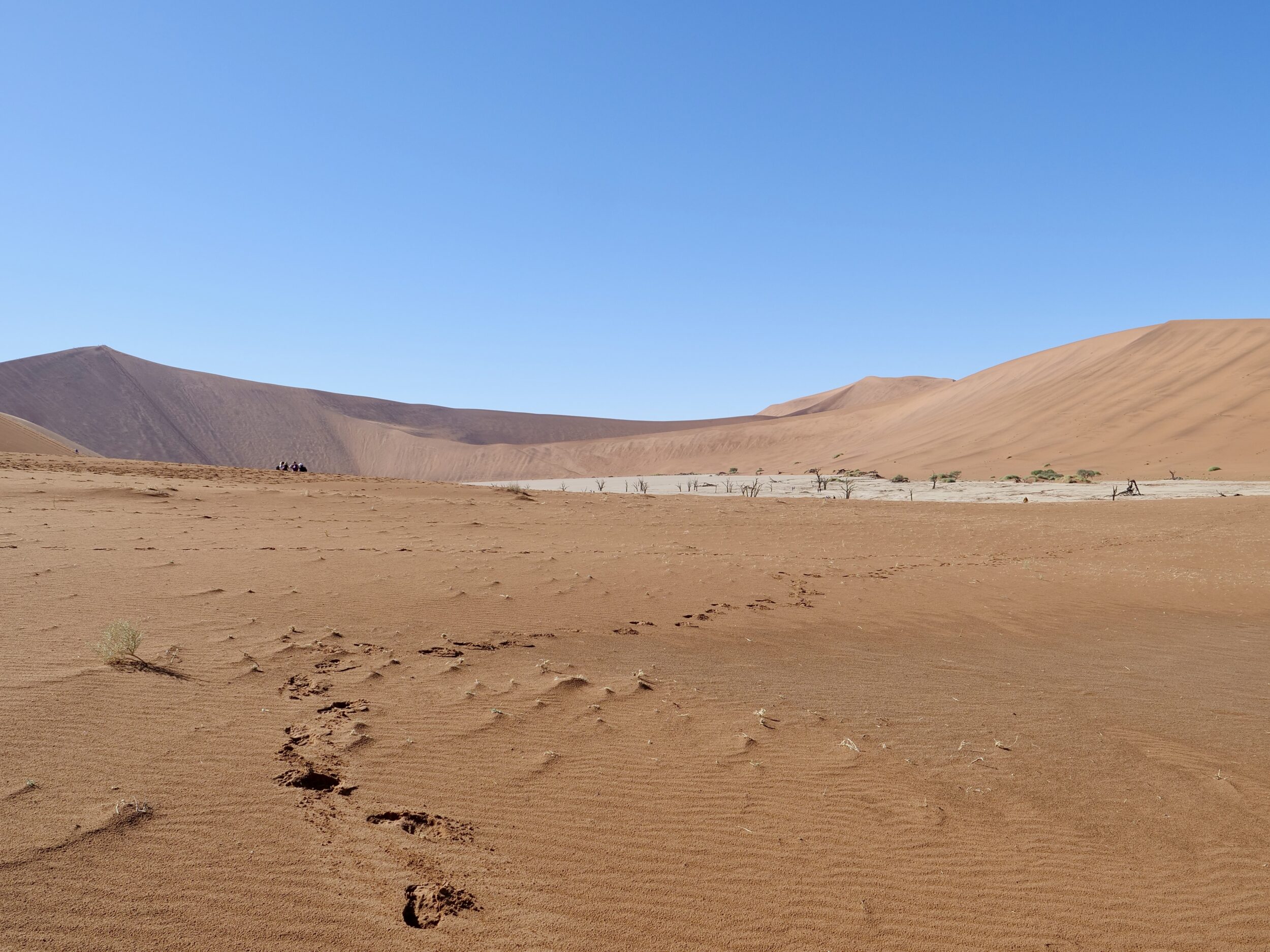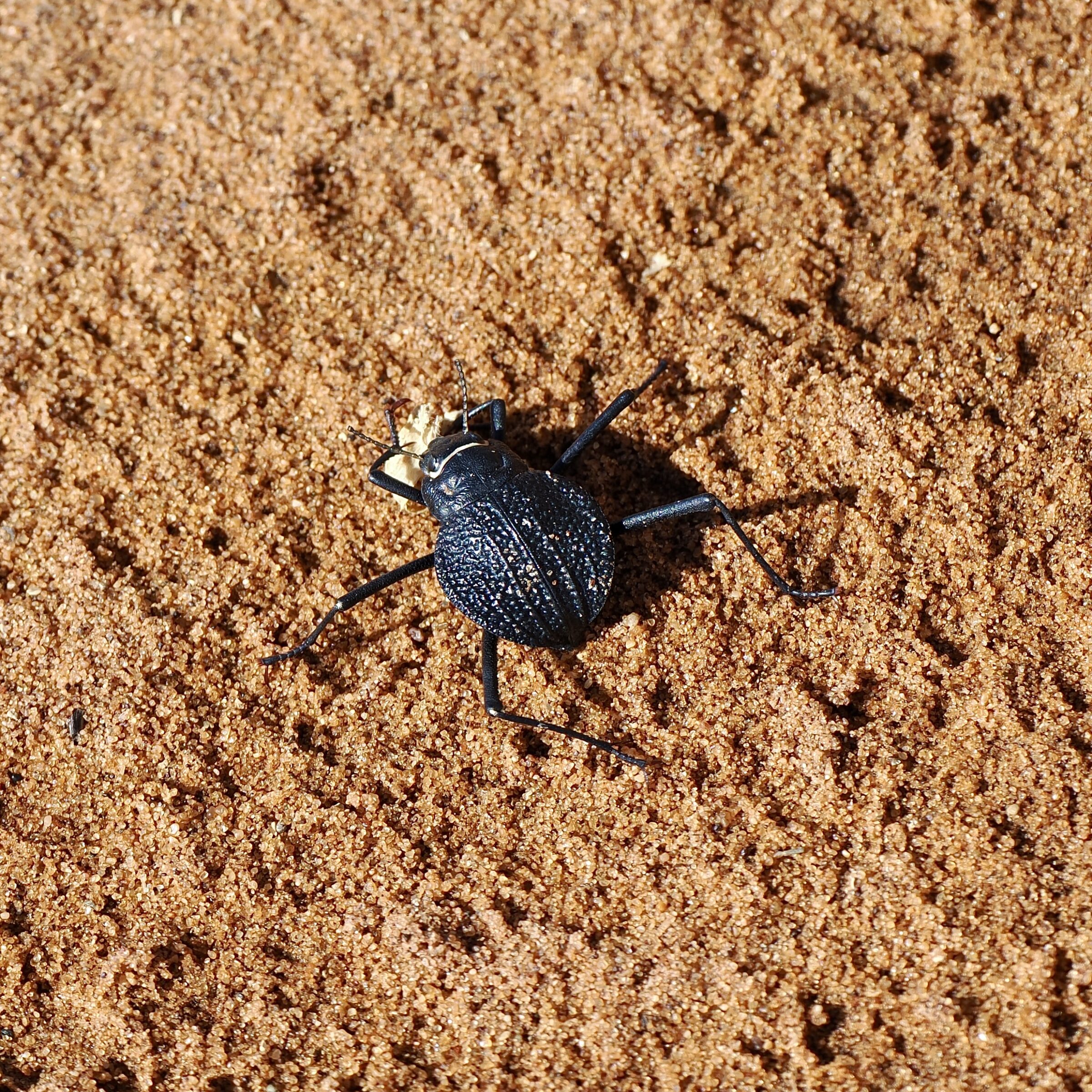If beetles had their own Olympics, the one you are looking at would be an unbackable “certainty” in sprint events.
When the pictured individual “took off”, haring across a dune above Sossusvlei, I could barely believe my eyes.
As I later discovered, the Namib Desert’s dune-dwelling Toktokkies are believed to be the fastest runners in all beetledom.
And that is not this particular Toktokkie’s most amazing aspect!
Q: what is a “Toktokkie”, according to Wikipedia?
A: various species of African darkling or Tenebrionid beetle of which the males strike their abdomens on the ground in order to attract mates that respond with their own tapping, thereby making a rapid tapping sound (“tok, tok”)
There are many different Toktokkies, but the really amazing ones are a small subset of Namibia’s species; they have adapted to a seemingly-impossibly “hostile” environment in what is very probably the world’s oldest desert.

Although oft-repeated, the claim that the Namib Desert’s “sand sea” has the world’s highest dunes is untrue.
However, I very much doubt that the world has any more beautiful dunes.
And – for most humans lucky enough to go there – the dunes around Sossusvlei are the highest their eyes will ever see, and the most substantial that their feet will ever walk on.
This is a place on which rain hardly ever falls.
Temperatures are extreme.
If you look closely at the pictured beetle you should gain some sense of how it “manages the heat problem”: its tiny feet minimise contact with hot sand, its long, thin legs distance its body from “burning” surfaces and those legs can carry the beetle across them at incredible speed.
You may guess, correctly, that this beetle can escape the day’s heat by burying itself, rapidly, in the cooler sand beneath the dune’s surface.
As you can also see, this Toktokkie has a very tough “shell”, which is helpful in keeping heat out and keeping moisture in.
But, but, but…you must be asking: how on earth does the Toktokkie get enough moisture in the first place?
It harvests fog!
Rainfall-wise, the Namib is one of the world’s driest regions.
However, the western part of the Namib is one of the world’s foggiest places; fog rolls in on many days, courtesy of “cold” Atlantic Ocean waters which lap “hot” Namibia’s coast.
Accordingly, various of the Namib’s animals and plants survive by “harvesting” condensation.
A Wikipedia description of one Toktokkie species’ technique:
When the fog rolls in at night or early in the morning, these beetles climb to the peak of the dunes, where the water condensation is most dense. The beetle performs a handstand by lowering its head and raising its posterior. The fog condenses on its back and drips into the mouthparts. Through this process, the “fog-basking” beetles can drink 40% of their body-mass.
This article includes an illustration, and further explanation.
If you zoom in on/enlarge the beetle in my photo you can see the relevant hydrophilic “bumps” and hydrophobic “valleys” on the highly-textured surface of the Toktokkie’s back.
Fog-water condenses on the “bumps”.
The “valleys” then carry the water to the beetle’s mouth.
An overview of Toktokkies is here.
At 8.46 am it was not yet very hot, and the pictured Toktokkie was moving slowly, having just “harvested” a dry grass seed.
